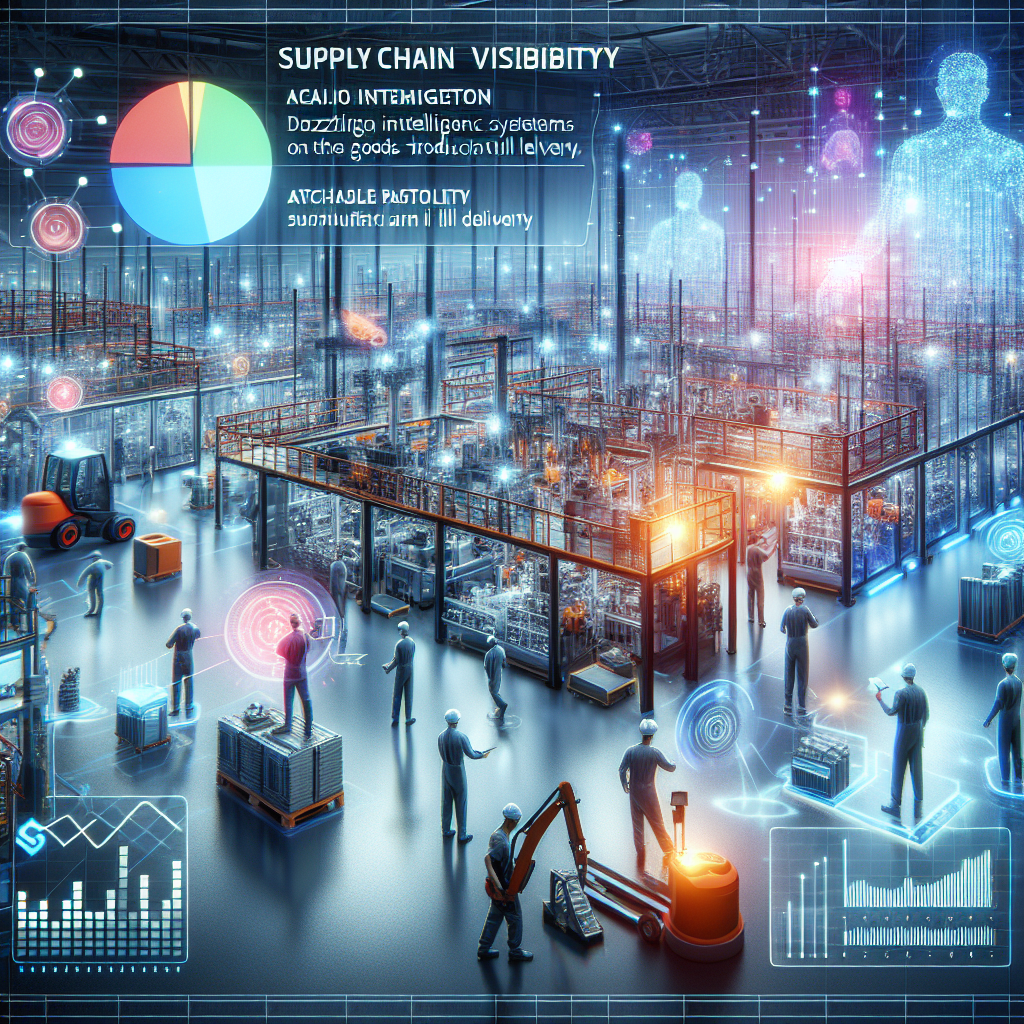In today’s fast-paced manufacturing industry, having real-time visibility into supply chain operations is crucial for success. With the rise of artificial intelligence (AI) technology, manufacturers are now able to harness the power of data analytics to gain insights that were previously unimaginable. AI-powered supply chain visibility is revolutionizing the way manufacturers track, manage, and optimize their supply chains, leading to increased efficiency, reduced costs, and improved customer satisfaction.
One of the key benefits of AI-powered supply chain visibility in manufacturing is the ability to track and monitor inventory levels in real time. By using AI algorithms to analyze data from various sources, manufacturers can accurately predict demand fluctuations and adjust inventory levels accordingly. This proactive approach to inventory management helps to minimize stockouts and overstock situations, leading to lower carrying costs and higher profit margins.
Another benefit of AI-powered supply chain visibility is the ability to identify potential bottlenecks and inefficiencies in the manufacturing process. By analyzing data from production lines, transportation routes, and supplier networks, AI algorithms can pinpoint areas of concern and suggest ways to optimize operations. This proactive approach to problem-solving can lead to faster production times, reduced lead times, and lower operating costs.
AI-powered supply chain visibility also enables manufacturers to track the performance of their suppliers in real time. By analyzing data on supplier performance metrics such as on-time delivery, quality levels, and pricing, manufacturers can identify underperforming suppliers and take corrective action. This level of visibility helps to build stronger relationships with suppliers and ensures a reliable supply chain.
Furthermore, AI-powered supply chain visibility allows manufacturers to better forecast demand and plan production schedules. By analyzing historical sales data, market trends, and external factors such as weather patterns, AI algorithms can generate accurate demand forecasts that enable manufacturers to optimize production schedules and allocate resources more efficiently. This leads to reduced lead times, improved customer service, and higher levels of customer satisfaction.
In addition to these benefits, AI-powered supply chain visibility also helps manufacturers to reduce the risk of disruptions in their supply chains. By analyzing data from various sources, including weather forecasts, geopolitical events, and supplier performance metrics, AI algorithms can predict potential disruptions and suggest alternative courses of action. This proactive approach to risk management helps manufacturers to mitigate the impact of disruptions and maintain business continuity.
Overall, AI-powered supply chain visibility is transforming the way manufacturers manage their supply chains, leading to increased efficiency, reduced costs, and improved customer satisfaction. By harnessing the power of AI technology, manufacturers can gain real-time insights into their operations, optimize their supply chains, and stay ahead of the competition.
FAQs:
Q: How does AI-powered supply chain visibility differ from traditional supply chain management techniques?
A: Traditional supply chain management techniques rely on manual data analysis and human decision-making, which can be time-consuming and prone to errors. AI-powered supply chain visibility, on the other hand, uses advanced algorithms to analyze vast amounts of data in real time and generate actionable insights. This allows manufacturers to make faster, more informed decisions and optimize their supply chains for maximum efficiency.
Q: What are some of the key challenges in implementing AI-powered supply chain visibility in manufacturing?
A: One of the key challenges in implementing AI-powered supply chain visibility is the integration of data from multiple sources, such as production systems, ERP systems, and supplier networks. Manufacturers must ensure that data is accurate, consistent, and up-to-date in order to generate reliable insights. Additionally, manufacturers may face resistance from employees who are accustomed to traditional supply chain management techniques and are hesitant to adopt new technologies.
Q: How can manufacturers ensure the security and privacy of their data when implementing AI-powered supply chain visibility?
A: Manufacturers must implement robust cybersecurity measures to protect their data from unauthorized access, theft, or manipulation. This includes encrypting sensitive data, restricting access to authorized personnel, and monitoring for any suspicious activity. Manufacturers should also comply with data privacy regulations, such as GDPR, to ensure that customer and supplier data is handled in a secure and responsible manner.
Q: What are some of the potential future trends in AI-powered supply chain visibility in manufacturing?
A: One potential future trend in AI-powered supply chain visibility is the use of predictive analytics to anticipate demand fluctuations and optimize production schedules in real time. Manufacturers may also leverage AI technology to automate decision-making processes, such as inventory replenishment and supplier selection, to further streamline their operations. Additionally, manufacturers may explore the use of AI-powered robotics and automation to enhance efficiency and productivity in their supply chains.

